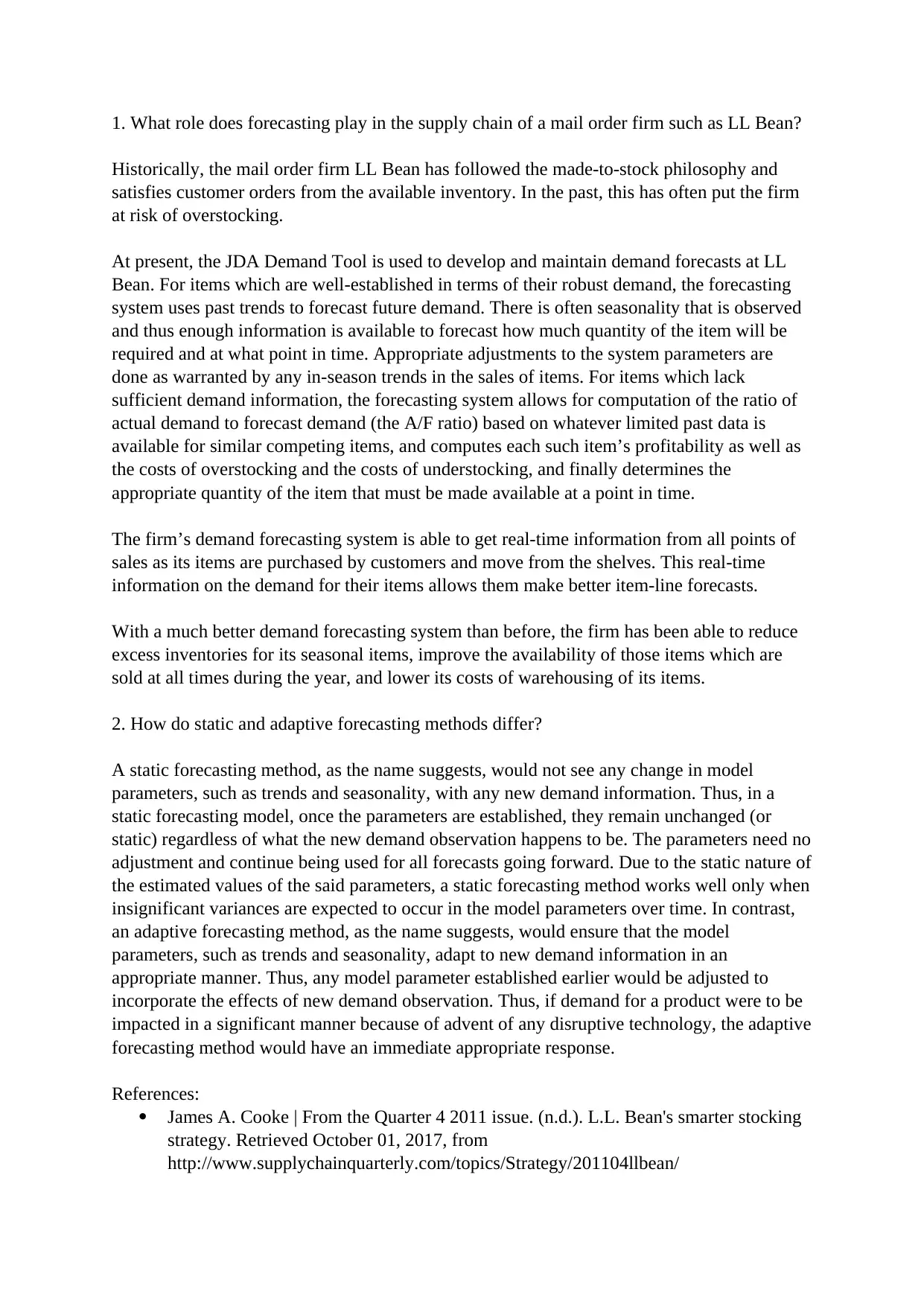Forecasting in LL Bean's Supply Chain
VerifiedAdded on 2019/09/26
|2
|633
|1484
Report
AI Summary
The assignment content discusses the role of forecasting in the supply chain of a mail order firm like LL Bean. The firm uses the JDA Demand Tool to develop and maintain demand forecasts, which helps reduce excess inventories, improve item availability, and lower costs. The article also explains the difference between static and adaptive forecasting methods, with static methods being less effective when there are significant changes in model parameters over time.
Contribute Materials
Your contribution can guide someone’s learning journey. Share your
documents today.
1 out of 2
![[object Object]](/_next/static/media/star-bottom.7253800d.svg)





